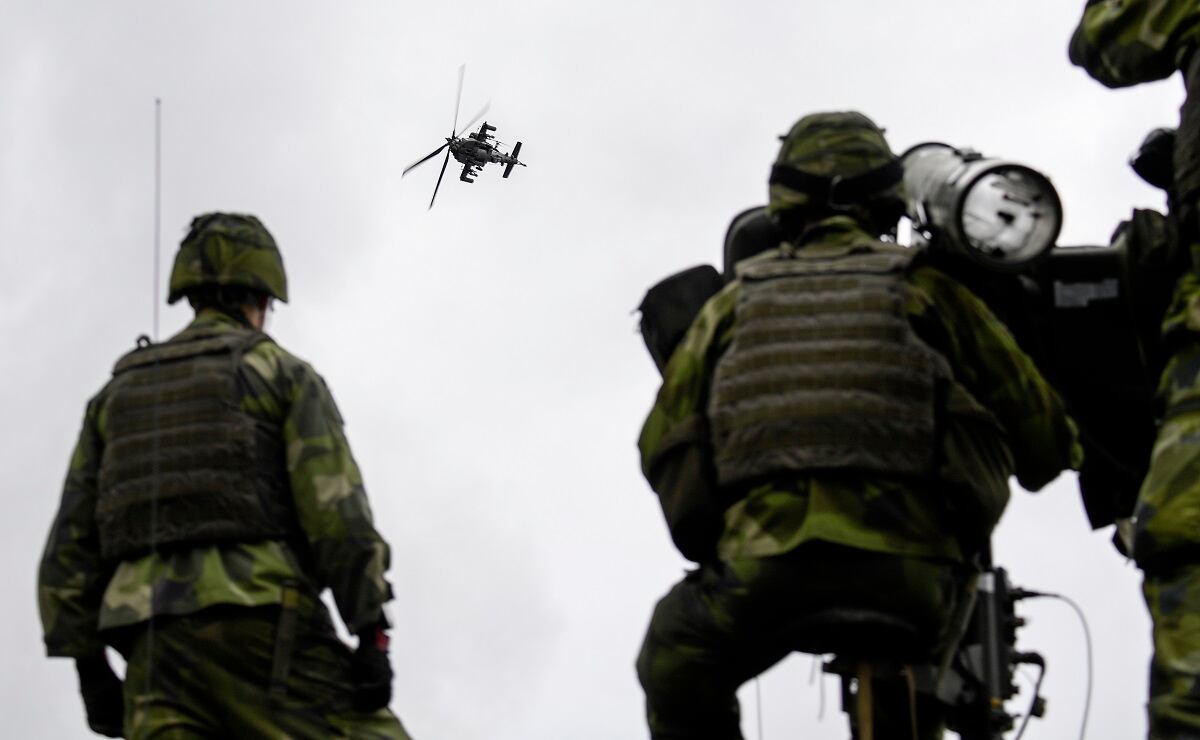The European security order is still being challenged. The security situation has deteriorated in the Baltic Sea region as Russia’s aggressive behavior continues. And just because time has passed since the Russian wars against Georgia and Ukraine, it does not mean that we can accept the status quo there.
The Swedish government will continue our two-track policy: to strengthen our national defense posture over the coming years and to deepen our international defense cooperation. The good news is that the new policy comes with increased resources.
The previous defense bill (2016-2020) presented by this government was significant since it marked a new trend in defense spending after years of neglect of the previous government. Now we are taking the next step. The new defense bill means a further increase in the defense budget from about $6.2 billion in 2020 to about $9.2 billion in 2025, and it represents the largest increase in defense spending in 70 years. This is not only a clear signal to the Swedish people and our partners, but also that we are taking the security situation seriously.
A new force structure will be launched this year. The total number of personnel will grow to 90,000 by 2030 compared to the 60,000 we have today. Basic training of conscripts — men and women — will gradually increase to 8,000 annually by 2025. A larger force structure also requires an expansion of training establishments.
RELATED

Taking military geography, readiness and infrastructural aspects into consideration, this means reestablishment of four Army regiments in the central and northern parts of Sweden. A new amphibious regiment will be located on the west coast in the logistical hub of Gothenburg, bringing back permanent military presence to Scandinavia’s biggest port. An additional air wing will be reestablished in the capital area. Altogether, this means a much more robust military presence in our country.
The Army’s force structure will consist of three mechanized brigades. The additional third brigade will be established in the south of Sweden. All Leopard II main battle tanks and CV90 armored personnel carriers will be upgraded, and the number of artillery battalions will be tripled. A fourth reduced motorized brigade will be set up in the Stockholm area. The defense of the strategic island of Gotland will be further bolstered, the core being a reinforced mechanized battalion. The divisional level, abolished in 2005, will be brought back with headquarters and support units. Deliveries of the Patriot air defense system, which we procured in August 2018, are underway.
Two new A26 Blekinge-class submarines will be delivered, and the number of submarines will increase from four to five. Midterm modifications of the Visby-class corvettes will be carried out. New anti-aircraft missiles will be added on five corvette platforms, which will bring significant strategic effects when it comes to the defense of Sweden. Preparations for the acquisition of new surface combatants will begin, with delivery to the Navy during 2026-2030. Logistic elements will be extended, including two new naval base battalions.
Six fighter squadrons are expected to be maintained during the period 2020-2025, with the current fighter system, JAS 39 C/D, operational alongside the introduction of the new generation JAS 39 E. In order to reinforce the capacity of the Air Force, additional air-to-air missiles and electronic warfare capabilities will be acquired. Furthermore, a new air-to-sea missile soon becomes operational, and a long-range air-to-ground missile is to be acquired in the period 2026-2030. Air Force logistics will be improved, including an expansion of the number of alternative landing bases. Air defense is also boosted by the introduction of the Patriot ground-to-air missile.
Our special forces will continue to evolve in contributing to national defense while maintaining a capacity to carry out operations internationally. Sweden’s upcoming engagement in Operation Takuba in Mali is a case in point. Defense intelligence capabilities are to be further enhanced along with cyber defense. The latter will include the ability to conduct defensive and offensive operations in the cyber domain.
An important task in the upcoming years is to reestablish our “Total Defence.” The resilience in critical functions needs to be enhanced in order to enable society to operate under severe crisis or wartime conditions. Civil and military defense needs to be developed in a coordinated fashion.
The deterioration of the security situation — due in part to the use of hybrid activities — is a fact. Just recently, the Swedish government decided to establish a new cybersecurity center, and a government agency for psychological defense will be established in 2022.
There is no doubt that we will face hard work over the coming years. With these ambitious goals, we will experience challenges when it comes to manning, equipping and organizing our armed forces. But we are ready to overcome the obstacles.
Furthermore, we do not act alone. Together with our European and trans-Atlantic partners, and by working in regional and multilateral structures, we contribute to security, stability and predictability. By investing heavily in our national defense, combined with international defense cooperation, we show that Sweden is a credible and reliable partner.
Peter Hultqvist is Sweden’s defense minister.








